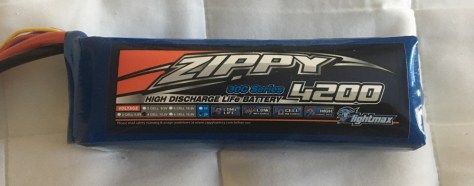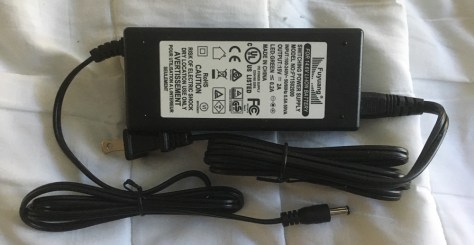Batteries are a necessity for portable operation, including Summits On The Air (SOTA) activations. In situations where I’m using a handheld transceiver, it has its own battery. I might carry a spare battery or two, depending on how long I intend to operate.
I also make use of my Yaesu FT-817 (mostly for 2m ssb/cw) and a small 2m/70cm FM transceiver (Yaesu FT-90). The FT-817 has an internal battery pack but I worry that it will run out of charge during the activation. The FT-90 needs a battery to function, drawing 9.5 A at full power. However, I usually run it at a lower power setting, probably drawing about 5 or 6 A.
Sealed Lead Acid Battery

I started out using a small sealed lead acid (SLA) battery. These use well-established battery technology that has stood the test of time. They are easy to charge and do a good job. But they are a bit heavy. Initially, I thought “what’s an extra pound or two in my backpack?” Later, I started looking around for something more compact and lighter. As backpackers and SOTA activators know, a pound here and a pound there means you up end up with a really heavy backpack.
Lithium Iron Phosphate Battery

Many SOTA activators use lithium iron phosphate (LiFePo4) batteries that are commonly used for radio-controlled aircraft/vehicles. I bought two of these batteries (Zippy 4200) and a special charger that handles LiFePo4. These batteries are lightweight and have great power density. One charge handled several SOTA activations…I never ran out of power.

As shown in the photo, these battery packs have two connections: one for charging that accesses each cell individually and one for current output that you connect to your radio. I removed the output connectors that came installed and replaced them with PowerPole connectors.
These batteries worked pretty well for me. They had plenty of capacity and held their voltage nicely during discharge. Then one of the batteries failed early in life. (I think I was taking good care of them, too.) One annoying thing with these batteries is that the charger was relatively large and had a fragile adapter that connected to the battery charging port. (This allows one charger to handle a wide variety of battery packs.) This was not a problem at home but I found it to be a disadvantage when traveling.
Bioenno Power 12 Volt Series
When the Zippy battery failed, it caused me to look further for other options. I ended up adopting the Bioenno series of batteries, specifically their 12V series: 12V Series – LFP (LiFePO4) Batteries. These battery packs also use LiFePO4 cells, but the charging controller smarts are embedded into the battery pack. These packs also have short circuit protection which is an awesome safety feature for lithium batteries. This makes the battery pack friendlier to use but it does cost a bit more. They also come with PowerPole connectors installed (along with another connection that I don’t use.)
From the Bioenno web site:
Our 12V LFP Lithium Iron Phosphate batteries give you the following advantages:
- We guarantee our entire battery range comes with built-in protection-circuit-modules (PCM) micro-computers that internally balanced cells and confer protection including from overcharge, overdischarge and short circuiting.
- A Bioenno Power battery is thermally and chemically stable
- A Bioenno Power battery is dependable and reliable without the possibility of lithium fires
- A Bioenno Power battery is 50% to 70% lighter than a traditional SLA (sealed lead acid) battery
- A Bioenno Power battery allows for extraction of >80-90% of the rated capacity, whereas an SLA battery only allows for 50% of the rated capacity
- A Bioenno Power product has a service life of 2000+ charge cycles at 5-10+ years with a shelf life that far exceeds the service life of many other batteries

I bought two of their battery packs. The 4.5 Ah pack is for normal SOTA use, small and lightweight (1 pound). The second pack is 9 Ah for when I’m operating for a longer time (weighs 2.6 pounds), such as mountaintopping for a VHF contest. The Bienno 2A charger, which has a nice compact form factor, works with both of them. This charger is much better for packing up when traveling.


I have used the Bioenno batteries on several SOTA activations and I’m quite happy with the setup. The Zippy LiFePO4 (and Sealed Lead Acid) are fine to use but I have found that the Bioenno system is superior overall. I will probably add a few more Bioenno battery packs to my collection over time. They make some really large batteries that would be good for EmComm work, but too heavy for hiking.
That’s my story on battery packs. What are you using?
73 Bob K0NR
No comments:
Post a Comment